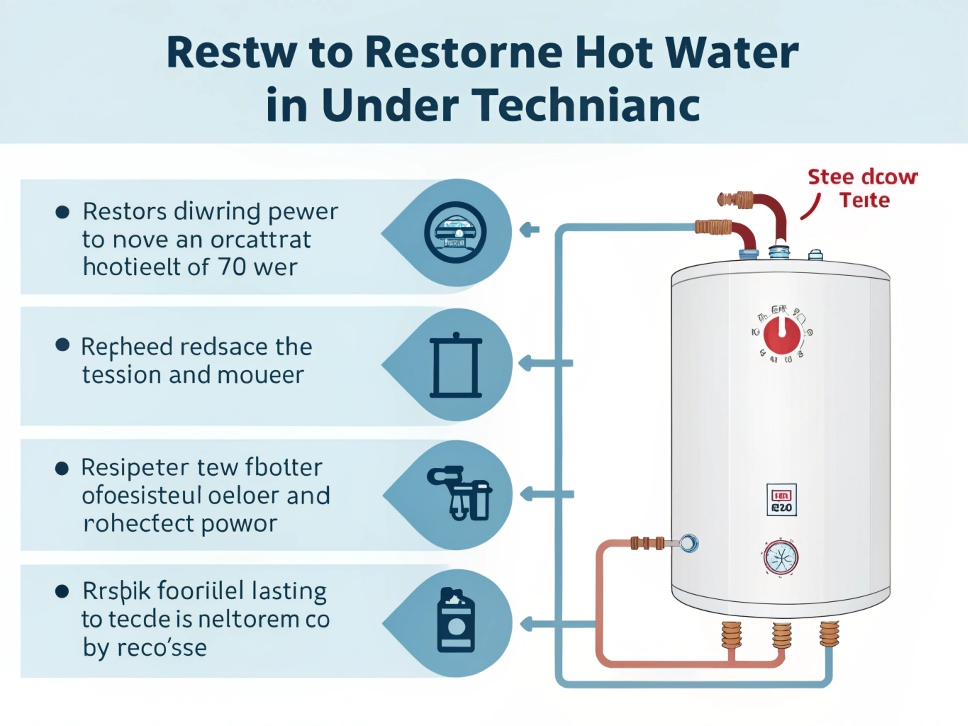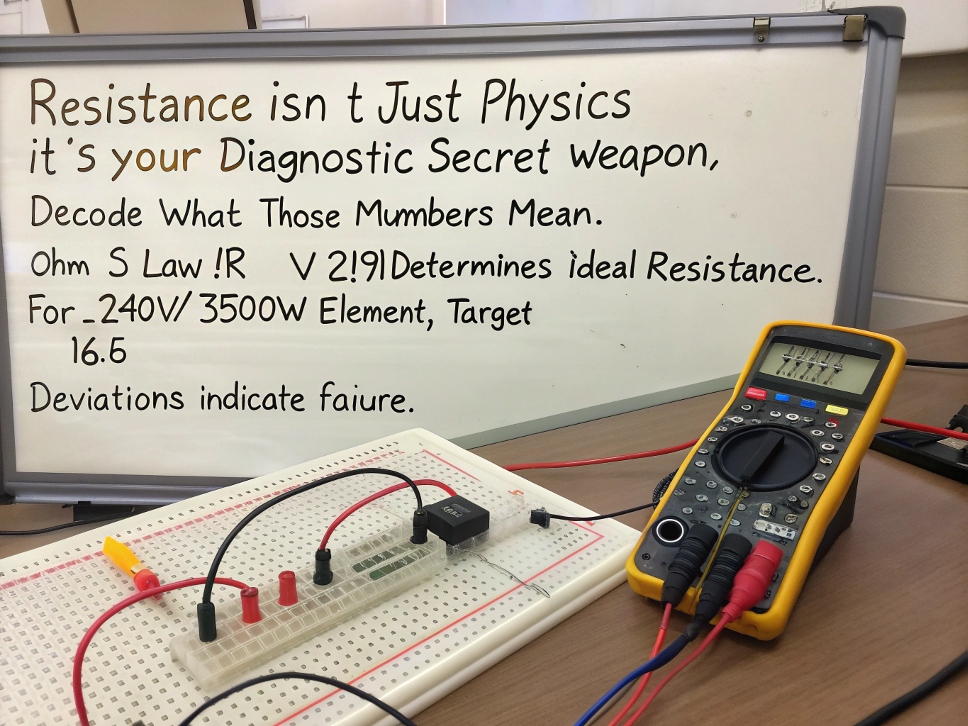Waking up to cold water? A faulty heating element could be draining your comfort. Don’t rush to replace the entire unit — let’s diagnose the real issue first.
To test a water heater element, use a multimeter to measure resistance. Disconnect power, remove the element’s cover, and check for continuity. No reading? The element needs replacement. Always prioritize safety first.
Testing a water heater element might seem technical, but with the right tools and steps, even beginners can master it. Let’s break down the process into actionable checks.
How to Test a Water Heater Element with a Multimeter: A Beginner’s Step-by-Step Guide?
Multimeters intimidate many, but they’re simpler than you think. This guide removes the guesswork from diagnosing heating elements.
Turn off power, set the multimeter1 to resistance (Ω), and test the terminals. A reading between 10-16Ω means the element works. Infinite resistance2? Replace it immediately.
Key Steps for Accurate Testing
- Power Safety:
Always turn off the circuit breaker and verify no voltage remains using the multimeter’s AC setting3. - Access the Element:
Remove the access panel and insulation carefully. Identify the element terminals. - Set Up the Multimeter:
Switch to Ohms (Ω) mode4. Touch one probe to each terminal. - Interpreting Results:
| Reading | Meaning | Action |
|---|---|---|
| 10-16Ω | Functional element | No replacement needed |
| 0Ω (Short) | Element is shorted | Replace immediately |
| ∞ (Open) | Element is broken | Replace immediately |
If the element fails, choose replacements with matching voltage/wattage ratings5. At ELEKHEAT, we provide durable, precision-tested elements designed for long-term reliability.
5 Signs Your Water Heater Element is Failing (And How to Test It Safely)
Your water heater whispers warnings before breaking down. Learn to spot these red flags early.
Signs include lukewarm water, frequent resetting, higher bills, strange noises, or leaks. Test using a multimeter for resistance or visible damage checks.
Decoding Symptoms and Solutions
- Lukewarm Water:
Upper or lower elements might be faulty. Test both. - Tripped Breaker:
A shorted element draws excess current. Check for 0Ω resistance. - Rust or Corrosion:
Inspect for physical damage. Even minor cracks demand replacement. - Long Heating Cycles:
Weak elements struggle to maintain temperature. Compare actual vs rated wattage. - Sediment Buildup:
Flush the tank annually. Sediment insulates elements, reducing efficiency.
- Wear insulated gloves.
- Never bypass the circuit breaker.
- Use a non-contact voltage tester to confirm power is off.
DIY Guide: Testing Your Electric Water Heater Element in 7 Easy Steps
No technician needed! Grab your tools, and let’s restore hot water in under an hour.
Disconnect power, drain the tank partially, remove the element, test resistance, inspect for damage, replace if faulty, and reassemble.
Detailed Breakdown of Each Step
- Power Down:
Shut off the breaker and water supply. Connect a hose to the drain valve. - Partial Drainage:
Drain 2-3 gallons to prevent spills while working. - Remove the Element:
Use a socket wrench to unscrew it. Avoid damaging the tank’s threads. - Multimeter Check:
Test as described earlier. - Visual Inspection:
Look for:- Cracks
- Burnt marks
- Bent shape
- Replacement Tips:
Match voltage (120V/240V) and wattage. Apply thread sealant for leaks. - Reassemble:
Refill the tank before restoring power to prevent dry firing.
Choose OEM-grade replacements like ELEKHEAT’s elements, which undergo rigorous quality checks for consistent performance.
Understanding Resistance: How to Diagnose a Faulty Water Heater Element
Resistance isn’t just physics — it’s your diagnostic secret weapon. Decode what those numbers mean.
Ohm’s Law (R = V²/P) determines ideal resistance. For a 240V/3500W element, target 16.5Ω. Deviations indicate failure.
Resistance Values Demystified
Calculate expected resistance using the formula:
Resistance (Ω) = (Voltage²) / Power
Example:
- 240V, 4500W element:
(240²)/4500 = 12.8Ω
| Power (W) | Voltage (V) | Ideal Resistance (Ω)6 |
|---|---|---|
| 1500 | 120 | 9.6 |
| 2000 | 240 | 28.8 |
| 5500 | 240 | 10.5 |
Significant deviations mean:
- Lower than calculated: Internal short7.
- Higher than calculated: Scale buildup or broken filament.
At ELEKHEAT, we pre-test every element to ensure resistance aligns with specifications, eliminating guesswork.
Troubleshooting 101: Quickly Check if Your Water Heater Element is Bad
Time is money. Use these rapid checks to confirm a faulty element in minutes.
Test for continuity, check for power at terminals, inspect for physical damage, and verify thermostat functionality before condemning the element.
Fast-Track Troubleshooting Table
| Step | Tool Needed | Expected Result | Failure Action |
|---|---|---|---|
| 1 | Non-contact voltage tester | No live voltage | Ensure breaker is off |
| 2 | Multimeter (Ω mode) | 10-16Ω resistance | Replace element |
| 3 | Visual inspection | No cracks/rust | Clean or replace |
| 4 | Thermostat test | Clicks when adjusted | Replace thermostat |
Always test both upper and lower elements. If unsure, consult ELEKHEAT’s technical guides or contact our support team for expert advice.
Conclusion
Testing a water heater element is straightforward with a multimeter and safety steps. Recognize failure signs early, use precise measurements, and choose quality replacements to ensure lasting hot water.
- Understanding multimeters can enhance your DIY skills and confidence in electrical diagnostics. ↩
- Learning to measure resistance accurately is crucial for effective troubleshooting in electrical systems. ↩
- Understanding the AC setting on a multimeter is crucial for accurate voltage testing, ensuring safety and reliability in electrical work. ↩
- Learning about Ohms mode helps you measure resistance effectively, which is essential for diagnosing electrical components. ↩
- Choosing the right voltage and wattage ratings for replacements ensures safety and optimal performance of electrical devices. ↩
- Understanding the formula for ideal resistance helps in evaluating electrical components effectively. ↩
- Exploring the causes of internal shorts can help in troubleshooting and maintaining electrical systems. ↩








